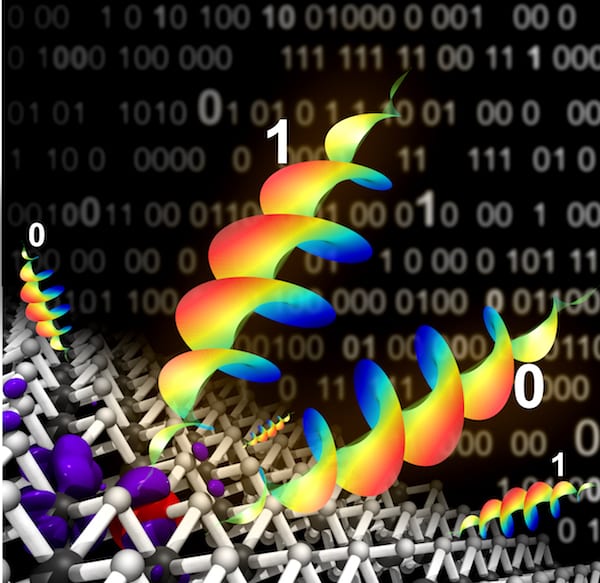Rice University scientists show how atom-flat materials could produce polarized photons on demand
If you can make a single photon, tell it how to spin and tell it where to go, you have a basic element for next-generation computers that work with light instead of wires. The Rice lab of materials theorist Boris Yakobson reported this month that by adding pre-arranged imperfections to atom-thick materials like molybdenum disulfide, they become perfectly capable of emitting single photons in either left or right polarization on demand.
 Defects in exotic, two-dimensional materials known as transition-metal dichalcogenides may be just what scientists need to advance quantum computing. Theoretical models by scientists at Rice University have predicted how particular 2D materials could be modified to produce photons with custom polarization. Illustration by Sunny Gupta
Defects in exotic, two-dimensional materials known as transition-metal dichalcogenides may be just what scientists need to advance quantum computing. Theoretical models by scientists at Rice University have predicted how particular 2D materials could be modified to produce photons with custom polarization. Illustration by Sunny Gupta
Imperfections make photons perfect for quantum computing

